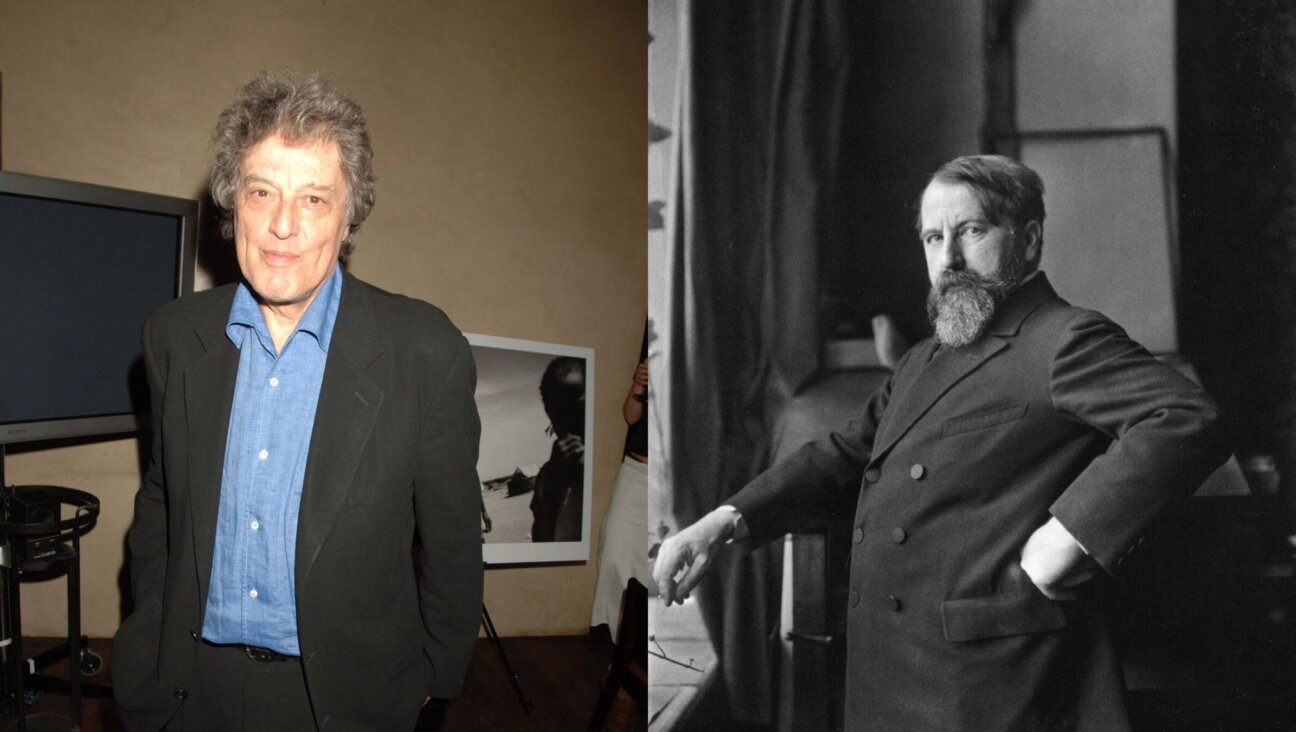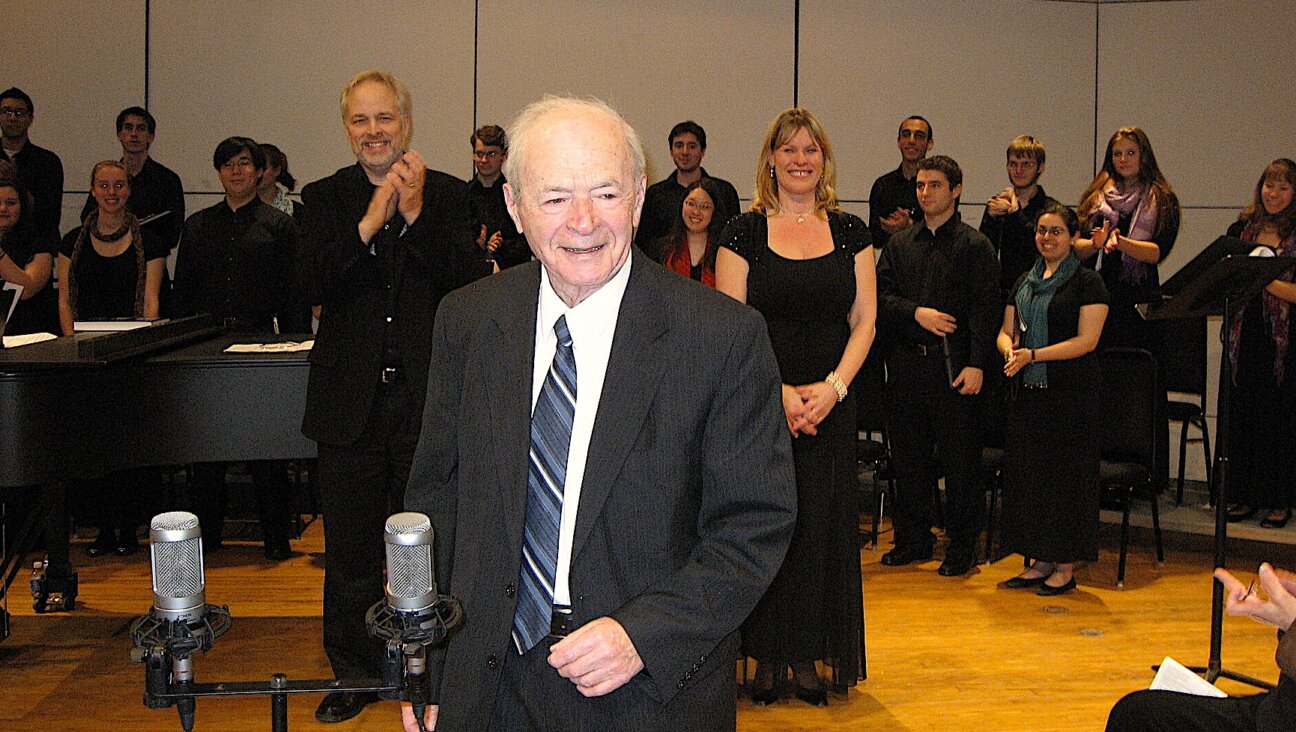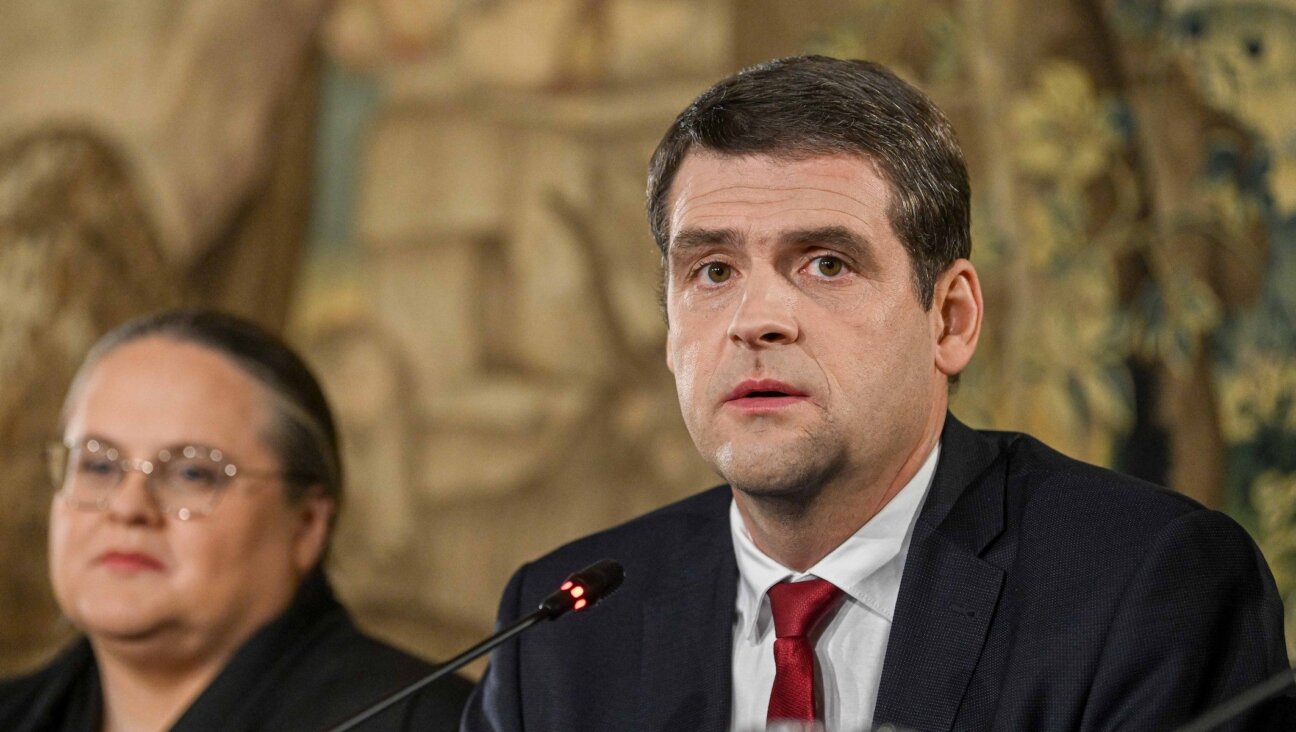Michael Shannon Makes Eugene Ionesco’s Disorienting ‘The Killer’ Memorable

Graphic by Angelie Zaslavsky
The first task would be to describe the play. In the case of the production of Eugene Ionesco’s “The Killer” currently running at Theatre for a New Audience, this is not so easy to do.
We open on Berenger (Michael Shannon), the shambling existentialist everyman who frequently leads us through Ionesco’s plays, touring a neighborhood called the Radiant City that defies the norms of the cramped, sooty, chaotic metropolis in which he lives. The Radiant City is a place where it never rains. The flowers are always in bloom. The architecture exemplifies the best examples of whichever style it embodies.
It’s a kind of Eden of urban planning and the Architect (Robert Stanton) who shows him around—he’s sometimes described as a civil servant and sometimes as a city planner, and sometimes as a commissioner, though whichever he is at any given moment, he’s clearly the neighborhood’s puppet master—presents it first as a fantastical triumph of human endeavor before admitting that it’s a place of great foreboding and failure after a rock falls out of the sky, nearly knocking Berenger out.
The Radiant City, we learn, is haunted by a killer who uses an old photo to lure people to a lagoon and drown them. This happens three times a day. Everyone knows who the killer is. He wears the same clothes and uses the same tactics each time. But like the European populace during the Holocaust, neither the police nor the residents of the neighborhood have the will or interest to stop him. When the killer strikes again, killing a woman named Dennie (Stephanie Bunch) with whom Berenger had earlier fallen instantly in love, Berenger swears vengeance.
This all plays out on an empty stage. Except for a small table, some periodic smoke effects and that rock falling from the sky, we in the audience are asked to imagine both the beauty and the terror. We’re in a Peter Brooks version of the familiar, slightly plastic Ionesco reality, where characters exist more as types than as people but the world is much as we know it to be, though punctured periodically by random weirdness.
In act two, the aesthetics of act one are turned on their head. Where act one was dignified, chatty and expositional, act two is antic, bawdy and physical. The stage is crowded with actors (an excellent ensemble that includes Kristine Nielsen and Liam Craig), coming and going, bickering and shouting, periodically running into doors. The bustle and chaos of urban life subsumes any sense of order.
Eventually, this cityscape gives way to a tenement apartment with a toilet in the kitchen. Here we are reintroduced to Berenger, still distraught about Dennie’s death. His sickly, gimpy friend Edward (Paul Sparks) is there too. They discuss their problems. The scene is played as nihilistic screwball comedy, the audience’s attention held through a progressive display of comic business, complete with funny voices, slapstick choreography and elaborate prop-related hi-jink that gradually comes around to focus on Edward’s briefcase, which happens to be suspiciously full of the killer’s belongings, most notably, hundreds of copies of the photo that the killer uses for his nefarious con.
So far so good. A plot has developed along with a number of narrative and aesthetic themes. We’re intrigued by the juxtaposition between the emptiness of act one and the fullness of act two, by the dialogue that seems to be developing between philosophical drama and materialistic farce. How will it all play out?, we wonder. In what way will the parts add up to a whole?
Act three presents us with something wholly different. The nameless townspeople have overrun the major action. We stumble with Berenger from one brutal mob to another—a fascist rally, a military riot—and somewhere along the line Edward, and the Edward storyline disappear completely. We’re left with Berenger alone in the void scaring himself and asking unanswerable questions, stalking in excruciating slow motion toward a ragged silent figure he thinks is, but we know is not, the killer as he delivers a seemingly endless monologue that earnestly explores the nature of murder. The overriding aesthetic here owes a debt to German Expressionism, where shadows and symbols are everywhere and nightmares bleed into and replace reality. Interesting as it may be, this act corresponds so little to what’s come before it that the most logical response is to say “Huh?”
But let’s take it at face value and assume that Ionesco meant act three to be an anti-theatrical gesture.
Often anti-theatrical work asks us to give in to an altered experience of space and time, it coaxes us to place our sense of reality in the director or playwright’s control, promising an immersive experience, though not necessarily a narrative. To carry out its effects, it eschews the cause-and-effect, character-based conflict, rising action, climax and denouement we expect from traditionally plotted plays. At its best, it releases us at the end of the experience sensorially, intellectually, sometimes even emotionally changed.
“The Killer” doesn’t do that. It holds just a touch too tightly to traditional forms, creating an expectation for narrative resolution that it has no intention of fulfilling. When, in the third act, Berenger and Edward begin their journey toward the Radiant City in search of the Architect/City Planner/Commissioner/Doctor/etc., we expect the action to relate meaningfully to their journey. Questions have been placed in our heads: Will Berenger realize Edward is the killer? Will Edward get away? Will justice be served and will stability and peace return to the city? We not only want answers to these questions. We want the play to dramatize these answers in such a way as to give them intellectual and emotional weight. And the reason we want these things is that by focusing so methodically on, first the mystery of the killing, and then Berenger’s quest for justice, the play has told us to want them.
Absurdist that he is, Ionesco aims to subvert our expectations. But unlike other plays of his, which either demand that we replace our ingrained search for narrative continuity with altogether different aesthetic criterion (The Chairs) or use the destruction of the narrative continuity as their organizing principle, thus integrating the formal breaches into the story (Rhinoceros), The Killer simply abandons the patterns it’s been developing partway through, leaving us to wonder if we’ve spent the past two and a half hours paying attention to all the wrong things. There’s no throughline. It’s a disorienting, confusing piece of work that doesn’t quite seem to know what it wants to be.
Darko Tresnjak, the director, seems to realize this and his response to the play’s scattershot aesthetic principles is to throw in every meta-theatrical trick at his disposal. Thus, we get all that smoke, all those divergent formal and stylistic notions jostling against each other. We get turntables in the floor. We get cast members wandering through the audience, handing out fliers. We get actors breaking their performance to note how unstable the set is. The sum of all this is like watching a precocious undergraduate directing student show off the multiple tools he’s learned, impressing the viewer with his craft, but exhibiting no sense that he has any idea how to pull all these theatrical notions together into a coherent whole.
Which is not to say that the play isn’t a provocative engaging experience.
Through it all, one thing remains consistent. Berenger himself. Or, more precisely, Michael Shannon’s performance of Berenger. It’s a difficult role, requiring both physical and mental stamina, and Shannon inhabits it with relentless, ferocious commitment. Like an oversized, Midwestern Peter Falk, he bumbles and fumbles and scratches his head, asking all the right questions at all the wrong times. Somehow, he manages to both slur and over-enunciate his words so that his voice alone conveys the wry, rueful weariness, the simultaneous wisdom and stupidity of the character. However disjointed the rest of the play is, he manages at every moment to convince the viewer that what’s happening on stage is crucially important. It’s as powerful a performance as I’ve ever witnessed from an American actor.
‘The Killer’ plays at Polonsky Shakespeare Center through June 29.
Joshua Furst is a contributing editor of the Forward. He is the author of “The Sabotage Café.”
















